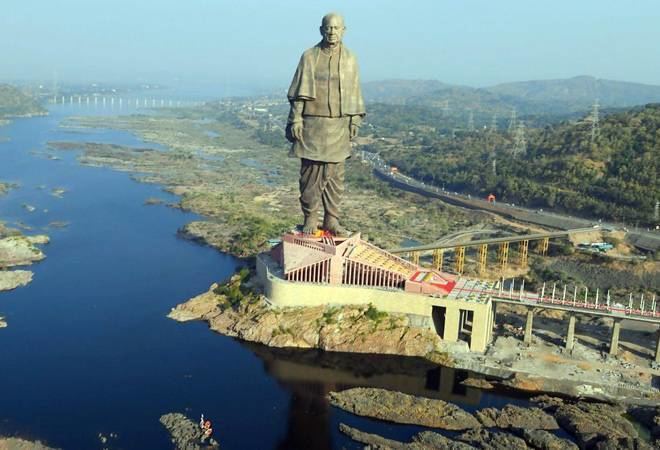Dedicated to Sardar Patel Created 31 October 2013 | Type Statue Height 240 m Architect Joseph Menna | |
 | ||
Beginning date 31 October 2014; 2 years ago (2014-10-31) Address Sadhu Bet, Sardar Sarovar Dam,Kevadiya Colony, Gujarat 393151 Hours Open 8 AM - 6 PM Everyday Similar Sardar Sarovar Dam, Spring Temple Buddha, Sardar Vallabhbhai Patel Nati, Laykyun Sekkya, Zarwani Waterfall Profiles | ||
The making of the world s tallest statue statue of unity
The Statue of Unity is a colossal statue of Indian statesman and independence activist Sardar Vallabhbhai Patel (1875–1950) who was the first Home minister of independent India and the chief adherent of Mahatma Gandhi during the non-violent Indian Independence movement; highly respected for his leadership in uniting the 562 princely states of India to form the single Union of India. It is located in the state of Gujarat, India. It is the world's tallest statue with a height of 182 metres (597 ft). It is located on a river island facing the Sardar Sarovar Dam on river Narmada in Kevadiya colony, 100 kilometres (62 mi) southeast of the city of Vadodara.
Contents
- The making of the world s tallest statue statue of unity
- Facts
- History
- Design and construction
- Funding
- References
The project was first announced in 2010 and the construction of statue started in October 2013 by Larsen & Toubro, who received the contract for ₹2,989 crore (US$420 million). It was designed by Indian sculptor Ram V. Sutar, and was inaugurated by Indian Prime Minister Narendra Modi on 31 October 2018, the 143th anniversary of Patel's birth
Facts
History
Narendra Modi first announced the project to commemorate Sardar Vallabhbhai Patel on 7 October 2010 at a press conference to mark the beginning of his 10th year as the Chief Minister of Gujarat. At the time, the project was dubbed, "Gujarat's tribute to the nation". A special purpose vehicle named the Sardar Vallabhbhai Patel Rashtriya Ekta Trust (SVPRET) was constituted by the Government of Gujarat for executing the project.
An outreach drive named the Statue of Unity Movement was started to support the construction of the statue. It helped collect the iron needed for the statue by asking farmers to donate their used farming instruments. By 2016, total 135 metric tonnes of scrap iron had been collected and about 109 tonnes of it was used to make the foundation of the statue after processing. A marathon entitled Run For Unity was held on 15 December 2013 in Surat and in Vadodara in support of the project.

